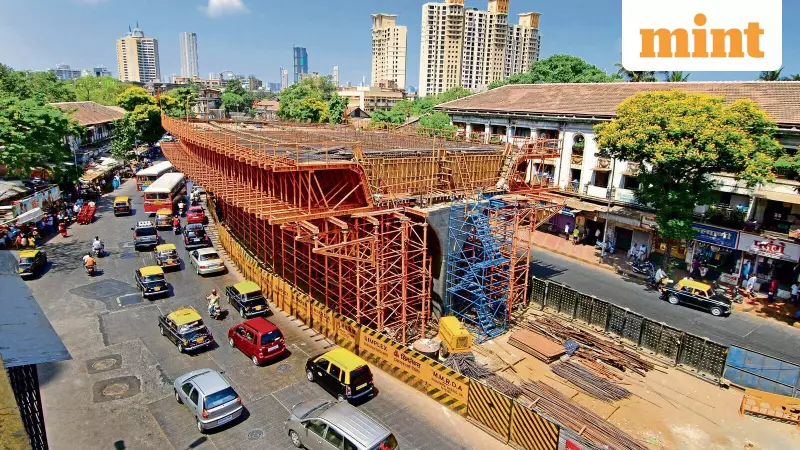
In a strategic shift towards fiscal prudence, the Indian government is expected to maintain its capital expenditure target for the financial year 2026-27 at approximately 3.1-3.2% of GDP, mirroring the current fiscal year's allocation, according to sources familiar with the matter.
This decision signals a move toward measured fiscal consolidation while balancing economic growth objectives with deficit reduction goals amid increasing global economic uncertainties.
Strategic Shift in Infrastructure Spending
The Centre's approach reflects a significant evolution in its infrastructure investment strategy. Rather than substantially increasing the capex ceiling, the government will utilize available fiscal space to continue funding large-scale infrastructure and industrial projects already in the pipeline.
The focus has shifted from merely expanding budgetary outlays to enhancing execution efficiency and ensuring that existing projects deliver tangible economic returns, according to the first anonymous official.
Efforts will concentrate on streamlining approval processes, reducing project delays, and strengthening coordination between central and state governments to maximize the overall economic impact of public spending.
Awaiting Private Sector Participation
This calibrated approach comes as the government anticipates a gradual pickup in private capital expenditure. Public investment has been the primary growth driver in recent years, compensating for sluggish private investment and uneven export demand.
With corporate balance sheets showing improvement and capacity utilization rates rising, the Centre expects private sector capex to gradually accelerate, reducing the burden on public finances.
The objective is to sustain economic momentum without overextending public finances, explained the second anonymous source. The emphasis over the coming years will transition from scale to strategic depth, ensuring capital spending creates productive assets, attracts private participation, and strengthens the economy's long-term capacity.
Quality Over Quantity in Public Investment
This policy direction aligns with recent reports indicating that Indian policymakers are shifting focus from expanding public capex scale to enhancing its quality and impact. The government is increasingly employing data analytics and AI-driven tools to track and assess project progress.
Greater emphasis is being placed on project execution, transparency, and measurable economic outcomes to ensure investments deliver concrete benefits such as durable infrastructure, stronger private-sector participation, and enhanced productivity.
For the current fiscal year 2025-26, the capex target stands at ₹11.21 trillion, representing about 3.1% of GDP. The effective capital expenditure for FY26 is projected at ₹15.48 trillion, including core capital outlays in the Union budget plus grants and aid to states for creating capital assets.
Economic Context and Expert Perspectives
With the economy projected to expand by 6.6%-6.8% in 2025-26 according to finance ministry estimates, maintaining capex at around 3.1% of GDP could still translate into a modest increase in absolute outlay for 2026-27, even as the capex-to-GDP ratio remains unchanged.
D.K. Srivastava, chief policy advisor at EY India, noted that overall capex, including private spending, grew 7.8% in the June quarter of 2025-26. He emphasized that continued reliance on government capex to drive growth remains appropriate given private sector investment languishment, though this creates pressure on the fiscal deficit, budgeted at 4.4% of GDP in 2025-26.
Economists highlight that with private investment still sluggish and global uncertainties persisting, government capital spending remains crucial for sustaining demand, generating employment, and catalyzing long-term growth.
Rumki Majumdar, economist at Deloitte India, stated that India must now prioritize spending to enhance competitiveness and build resilient supply chains. She recommended investments in port infrastructure to capitalize on India's extensive coastline and channeling capital into clean energy to reduce fossil fuel dependence and improve energy security.
Rishi Shah of Grant Thornton Bharat emphasized that sustained public capital formation during global uncertainty represents not merely counter-cyclical spending but investment in foundational conditions for long-term productivity growth. He noted that quality investments in logistics corridors, power infrastructure, and urban manufacturing clusters generate positive externalities that compound over decades.
The crucial question, according to Shah, is whether the current quantum of public investment is sufficient to trigger a self-sustaining private investment cycle. For India to accelerate beyond current growth projections of 6.5-7% toward a sustainable 8%, the overall investment rate needs to rise to 35-36% of GDP.





